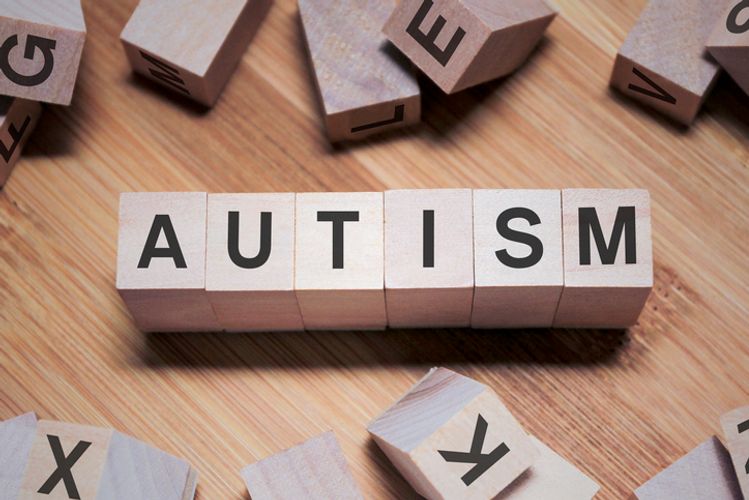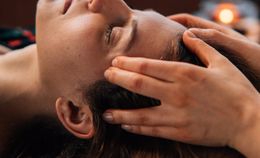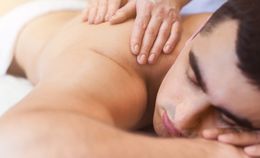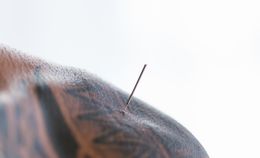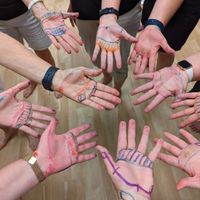Do you know a child or an adult who lives with autism? Are you looking for a holistic therapy that may help with the symptoms associated with autism?
Craniosacral Therapy for Autism
To understand the benefits craniosacral therapy can have on autism and its symptoms, we are going to explore the findings of a study that identified benefits based on parents perspectives. We are going to discover six different types of benefits and what changes you may experience with each type:
-
General benefits
-
Emotional benefits
-
Social benefits
-
Language or cognitive benefits
-
Sensory-motor benefits
-
Neurological benefits
Each child living with autism will have a different response to craniosacral therapy.
1. General Benefits
Overall, parents have reported the following general benefits:
Seizures: Children with autism, can experience seizures. Many parents have reported progress in reducing the severity and number of seizures through craniosacral therapy sessions.
Gastrointestinal: Pain experienced from gastrointestinal challenges may be lessened.
Quality of life: Overall, parents have witnessed a positive change in the overall quality of life.
2. Emotional Benefits
There are three main emotional benefits:
Anxiety: Levels of anxiety have been reported as being reduced. One child was documented as asking for craniosacral therapy when he/she began to feel anxious.
Social communication: Improvements may be seen and experienced.
Emotional regulation: Children have shown a greater ability to regulate their emotions.
3. Social Benefits
There are three main social benefits:
Eye contact: Eye contact may increase.
Social interactions: The level of social interactions may increase including the quality of interactions.
Spacial awareness: A child's spatial awareness may become expanded.
4. Language or Cognitive Benefits
There are four main language and social benefits:
Cognitive: Cognitive improvements may be seen and observed.
Expressive language: Expressive language may increase.
Sounds: The sounds used for speech may see a growth in quantity.
Simple conversations: A child may start to participate in simple conversations.
5. Sensory-motor Benefits
There are three main sensory-motor benefits:
Touch: Being tolerant of touch may increase.
Motor planning: Motor planning and movement may improve.
Sensory challenges: Any sensory challenges may lessen.
6. Neurological benefits:
Pain: Pain may decrease.
Play: A child's ability to engage in play may greatly increase.
Dooling: It may help lessen and stop drooling.
Tics: If a child has any tics, the severity and frequency of the tics may decrease.
Headaches: The frequency and intensity of headaches may go down.
How Many Sessions are Recommended?
According to John E. Upledger, the founder of the Upledger Institute of Craniosacral Therapy, from his own experience and the studies that he conducted, he recommended and suggested the following number of sessions for children living with autism:
Regular: Regular weekly sessions as the child grows into adulthood. Such a schedule for craniosacral therapy will help maintain alignment and unrestricted flow of the cerebrospinal fluid around the brain and spinal cord as a child grows.
Longer intervals: Longer intervals between treatment sessions may be possible. It was suggested that if longer intervals are chosen, keeping an observant eye on the severity level of symptoms and changes is important. If things that were progressing positively regress, then, going in for a session may be a good idea.
Parental education: It was also suggested that if weekly sessions are not possible due to finances or distance required for reaching a trained practitioner, parents may choose to take classes or find a practitioner who will show them how to help their child in between sessions. This suggestion is similar to a hypnotherapist teaching a client about self-hypnosis. It may also help with strengthening the parent-child bond. If this aspect of parental care is chosen over a weekly session, speak to your practitioner about getting a re-evaluation every six months.
Cost
The average cost per session for an adult in the United States is $70-$170. If you are seeking treatment for an adult with autism, this is a good baseline to consider.
If you are considering craniosacral therapy for a child, be sure to ask practitioners what their rate is for children. Often times, it can be half of what is charged for adults. This is because the average session for a child is usually only half an hour or less. Although, it can be up to an hour.
What you will notice, is that the length of a session is often based on the child and the signals or messages his/her body is sending the practitioner. For more information, read: How Much Does Craniosacral Therapy Cost?
References:
Autism Spectrum Disorder: How CranioSacral Therapy Can Help. (n.d.). Retrieved April 9, 2019, from https://upledger.ie/articles/autism-spectrum-disorder-how-craniosacral-therapy-can-help
Brondino, N., Fusar-Poli, L., Rocchetti, M., Provenzani, U., Barale, F., & Politi, P. (2015). Complementary and Alternative Therapies for Autism Spectrum Disorder. Evidence-based complementary and alternative medicine : eCAM, 2015, 258589. doi:10.1155/2015/258589. Retrieved April 9, 2019, from https://www.ncbi.nlm.nih.gov/pmc/articles/PMC4439475/
CRANIOSACRAL THERAPY. (n.d.). Retrieved April 9, 2019, from http://www.autism-help.org/intervention-cranio-sacral-therapy.htm
The use of CranioSacral therapy for Autism Spectrum Disorders: Benefits from the viewpoints of parents, clients, and therapists. Kratz, Susan Vaughan et al. Journal of Bodywork and Movement Therapies, Volume 21, Issue 1, 19 - 29. Retrieved April 9, 2019, from http://massagetherapyfoundation.org/wp-content/uploads/4-Susan-Kratz_Craniosacral-for-autism_2016.pdf
Upledger,, J. E. (n.d.). CranioSacral Therapy and Autism: Observations, Experiences, and Concepts. Retrieved April 9, 2019, from https://www.iahe.com/docs/articles/craniosacral-therapy-and-autism.pdf

